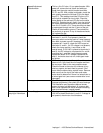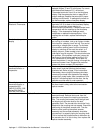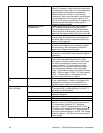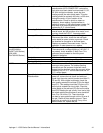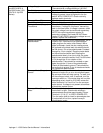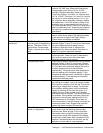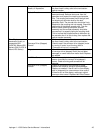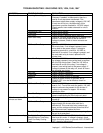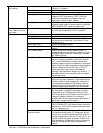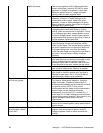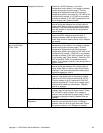
Impinger I -–1000 Series Service Manual - International 42
DC Motor Control Board Check for 120 VAC input to the control board at
terminals L1 and L2. If not present, check the
conveyor switch and wiring back to 3-amp fuse and
then back to power source if necessary. If 120 VAC
is present at L1 and L2, check the VDC output at
terminals A+ and A-. If a DC voltage is not present,
check the 4 amp and the 1 amp fuses on the
control board. Also reset and check the mini
breaker in the armature line to the gearmotor. If
120 VAC is present at terminals L1 and L2, but DC
voltage is not present at A+ and A-, providing the 1
amp and 4 amp fuses are good, replace the board.
If DC voltage is present at A+ and A-, but motor
does not run, check gear motor as follows.
Conveyor Gear Motor If DC voltage is present at A+ and A- and the motor
does not run, first check the mini breaker and then
the conveyor. Refer to the next possible cause.
Check the leads to the motor for evidence of any
shorts or opens, and each lead to ground. If the
motor fails the above tests, replace motor. Remove
dust cover from the top of the motor and rotate
motor shaft to determine if there is a locked rotor or
a locked gearbox (use care so encoder disc is not
damaged).
Conveyor Check for any mechanical misalignment or
improper adjustment. Also check for worn bearings.
The Installation and Operations Manual shows
proper conveyor belt adjustment. A conveyor belt
that is over tightened will cause excessive bearing
wear and sometimes, irregular speed.
Power Supply Check power supply at the DC control board for the
120 VAC at board terminals L1 and L2. If voltage is
not present, check main circuit breakers.
Conveyor speed
varying or intermittent
Tach generator and DC Motor
Control Board
With the power to the DC motor control board
turned off, remove the leads from terminals T1 and
T2.Place the test leads of a digital meter on the
tach leads, turn power on, and the meter reading
should be approximately 30 to 35 VDC. This
reading should be steady within ± 0.2 to 0.3 VDC. If
this reading is not within + 0.5 VDC, place the test
meter probes on terminals A+ and A-. The meter
reading should be approximately 150 to 160 VDC
and steady within approximately 2 VDC. If the tach.
voltage is unsteady, and the board output is steady,
check the coupling for loose set screws or any type
of damage. If the coupling checks good, the tach. is
usually bad. If the board voltage output is unsteady
beyond limits, then the board is probably bad.
Always check the speed pot. Be sure it is okay
before changing a board or tach. This test is not
always 100% accurate as this test is not performed
at operating speeds. However, this test is the best
method currently available. Readjustment should
always be attempted at least once before
replacement. See procedure for board adjustment
on page 65.
DC Gearmotor If the DC control board is steady then the problem
may be the motor or gearbox. Check the brushes in
the motor for excessive arching and/or unusual
wear. Check the motor and gearbox from
instruction located on page 34 under "possible
cause" listing "Conveyor gear motor".



